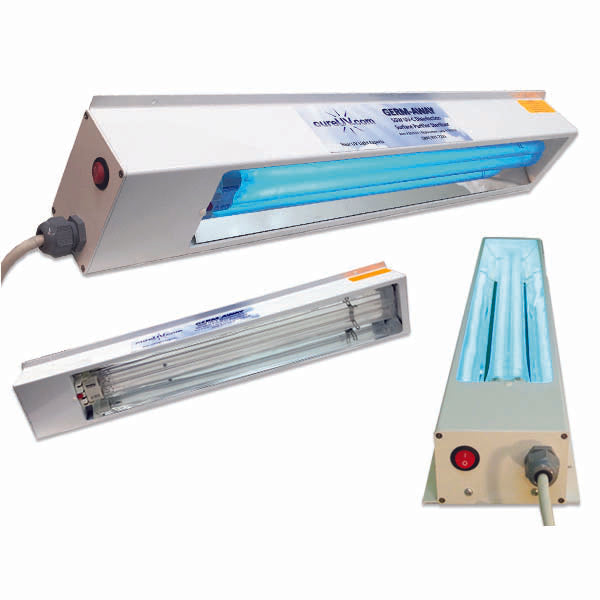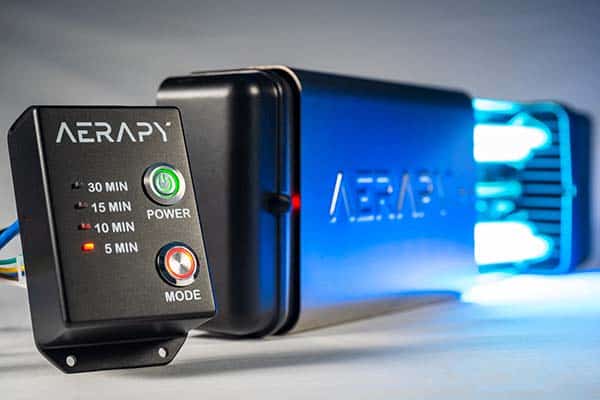Checking out the Benefits of Far-UVC Technology in UV Sanitizers: A Complete Summary
Checking out the Benefits of Far-UVC Technology in UV Sanitizers: A Complete Summary
Blog Article
Much UVC Light: A Game-Changer in the Battle Versus Airborne Pathogens
In the ever-evolving fight against airborne virus, the introduction of much UVC light has stimulated significant interest and capacity. What specifically is much UVC light, and how does it function?
The Scientific Research Behind Far UVC Light
The clinical principles underlying making use of Far UVC light as a potential option for combating air-borne virus are both promising and complex. Much UVC light describes a particular variety of ultraviolet (UV) light wavelengths, generally between 207 and 222 nanometers, which have actually been located to effectively kill or inactivate microorganisms such as infections and microorganisms. Unlike conventional UVC light, which has a shorter wavelength and is known for its germicidal residential properties but can also hurt human skin and eyes, Far UVC light has been shown to be risk-free for human exposure.
The key system behind the efficiency of Far UVC light depend on its capability to pass through and damage the hereditary material of bacteria, including their DNA and RNA. When subjected to Far UVC light, the hereditary product goes through a procedure called photodimerization, where nearby bases in the DNA or RNA molecule bind together, stopping duplication and making the bacterium not able to trigger or recreate infection.

How Much UVC Light Works
Far UVC light runs by utilizing specific ultraviolet wavelengths to successfully neutralize microbes and avoid their replication, making it an encouraging option for combating airborne microorganisms. Unlike conventional UVC light, which is unsafe to human skin and eyes, much UVC light has shorter wavelengths, typically in the series of 207 to 222 nanometers (nm), that do not penetrate the external layer of the skin or the tear layer of the eye. This makes it risk-free for constant human direct exposure, while still being deadly to infections and germs.
The performance of much UVC light lies in its capability to damage the dna and permeate and RNA of microorganisms. When subjected to far UVC light, the hereditary material of these microorganisms is damaged, making them unable to reproduce and infect cells. Furthermore, researches have revealed that much UVC light can efficiently suspend air-borne infections, such as flu, measles, and coronaviruses, consisting of SARS-CoV-2, the virus in charge of COVID-19.
Furthermore, far UVC light is additionally with the ability of sanitizing surface areas and things in an encased room. By installing far UVC lighting fixtures or making use of mobile much UVC light gadgets, it is feasible to continually disinfect the air and surfaces, minimizing the threat of air-borne transmission of pathogens.
Advantages of Far UVC Light
Making use of far UVC light deals a variety of considerable benefits in combating air-borne pathogens and making sure a safer setting for constant human direct exposure. One of the key benefits of far UVC light is its capacity to successfully counteract various kinds of harmful microorganisms, viruses, and fungis without causing harm to human beings. Unlike traditional UV light, which can be hazardous to human skin and eyes, much UVC light has a shorter wavelength that enables it to target and ruin virus while presenting minimal danger to human health and wellness.

Furthermore, far UVC light is much more secure for the atmosphere contrasted to conventional disinfection techniques. Chemical anti-bacterials frequently include harmful components that can have unfavorable effect on the setting. Far UVC light, on the other hand, does not produce any type of harmful results or deposits, making it an extra environment-friendly and lasting remedy.
Applications of Far UVC Light
Far UVC light has confirmed to be reliable in eliminating air-borne pathogens such as microorganisms, viruses, and fungis. Unlike traditional UV light, much UVC light is secure for human exposure, making it appropriate for continuous use in public spaces such as workplaces, hospitals, and colleges.
Another application of far UVC light remains in the medical care industry. It can be made use of to sanitize hospital spaces, running cinemas, and clinical equipment, minimizing the threat of healthcare-associated infections. In addition, far UVC light can be integrated right into cooling and heating systems to purify the air circulating in buildings, supplying an included layer of security versus air-borne virus.
Furthermore, far UVC light can be used in the food market to protect against foodborne diseases. It can be employed to disinfect food processing facilities, killing bacteria and other microorganisms that may pollute food items.
Future Effects of Far UVC Light
The possible future visit this site applications of far UVC light are vast and hold promise for numerous markets and sectors. Centers and medical facilities could utilize much UVC light to sanitize person spaces, operating cinemas, and waiting areas, reducing the threat of healthcare-associated infections.
In addition, making use of much UVC light in public areas such as airports, train terminals, and mall could help regulate the spread of airborne virus. By constantly decontaminating these areas, the threat of transmission might be significantly decreased, giving a much safer setting for individuals.
An additional potential application of much UVC light remains in the food market. Much UVC light could be made use of to disinfect food prep work surface areas, packaging products, and storage space areas. This can Look At This help avoid the contamination of food and lower the occurrence of foodborne ailments.
Furthermore, far UVC light might be used in a/c systems to decontaminate the air circulating in structures. This might be specifically valuable in congested spaces such as schools, movie theaters, and workplaces, where the danger of air-borne transmission is greater.
Verdict
To conclude, far UVC light has actually become a game-changer in the battle against airborne virus. Its one-of-a-kind properties and ability to safely kill microorganisms and viruses make it an appealing option for numerous applications. From public areas to medical care setups, much UVC light deals various benefits in decreasing the transmission of illness. With additional r & d, its extensive application might have considerable effects for the future of infection control.
Far UVC light refers to a certain variety of ultraviolet (UV) light wavelengths, usually between 207 and 222 nanometers, which have been found to properly eliminate or inactivate microorganisms such as infections and germs. far-uvc. Unlike traditional UVC light, which has a shorter wavelength and is recognized for its germicidal residential or commercial properties but can also harm human skin and eyes, Far UVC light has actually been revealed to be risk-free for human exposure
Unlike standard UVC light, which is damaging to human skin and eyes, far UVC light has much shorter wavelengths, generally in the range of 207 to 222 nanometers (nm), that do not pass through the try this website outer layer of the skin or the tear layer of the eye. Unlike standard UV light, which can be dangerous to human skin and eyes, far UVC light has a much shorter wavelength that enables it to target and damage microorganisms while posturing marginal threat to human health and wellness.
Unlike traditional UV light, far UVC light is risk-free for human exposure, making it suitable for continuous usage in public spaces such as institutions, hospitals, and workplaces.
Report this page